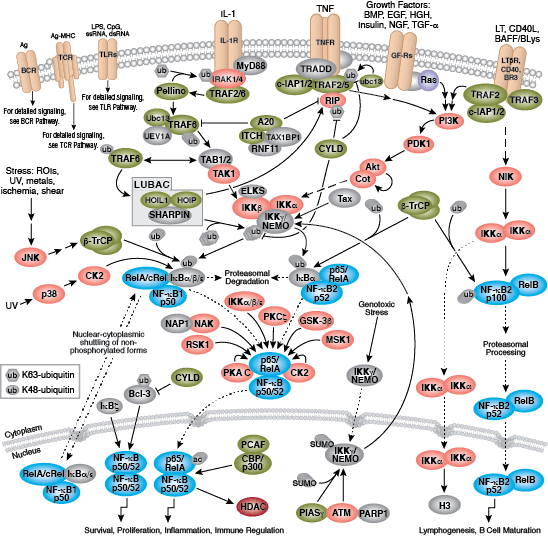Biology will be the next great computing platform, DNA will be the code that runs it, and CRISPR will be the programming language and AI will show the way in the darkness of complexity
Every living organism has its genome at its heart. If the cell is a computer, it is the software it runs the genome sequence. If we think of DNA as software operated by the cell, we can use our own computers to analyze how it works with similar logic. DNA is not just an information store, it is a physical structure that can be read, written, and hacked.
Humans have been unconsciously hacking other creatures and their own genome for thousands of years. For example, the seeds of the corn plant were very small and hard in the past, or the hen’s ancestor lays eggs once a month, while the chickens developed by artificial selection produce eggs in much shorter times.In addition, societies dealing with animal husbandry hack their own DNA in a way that can digest lactose.
For 4 billion years, DNA has been replicating and changing itself continuously, depending on the laws of physics and chemistry. In this process, it started with a simple beginning and reached incredible complexity.
Even though DNA does not work exactly like computer software, editing processes can be thought of in this way. You can make larger apples with artificial selection, but it takes a lot of luck and time to make an apple that glows in the dark.
For this reason, DNA should be considered as readable, writable and hackable information so that the desired changes can be made much faster and more precisely.
Specialized Scissors

Bacteria and Viruses have been fighting for billions of years. Even Bacteriophage class viruses are specialized to infect bacteria.
In the evolutionary arms race, 2 rivals develop increasingly complex solutions. For example, as the cheetahs start to run faster, gazelles are chosen to run faster.
Similarly, it develops new mechanisms in viruses and bacteria. Crispr is actually a bacterial immune system. Similar to human immunity, it recognizes and neutralizes the foreigner.
With Crispr Genes can be edited in the following ways:
- When the desired DNA region is cut, DNA repair systems are activated. Chemicals or ionized radiation in the environment under normal conditions can also damage DNA. If the damage is beyond repair, the cell goes to programmatic death.
- While the DNA repair system combines the damaged steps, it adds and subtracts to the broken region and its function is impaired because the information of the gene in that region changes.
- If a template DNA is given to the repair system, the gap is filled with this information and the desired genes can be added to the parent DNA from the cut site.
Crispr technology is of course not perfect. Cas9 can engage in cell defense mechanisms or cut unwanted DNA regions.
Each revolution happens much faster than the previous one. The agricultural revolution took place 12000 years ago, the industrial revolution 200 years ago, and the internet revolution 40 years ago. Revolutions in biology will also occur at exponential speed.
Playing With Fire

The SCN9A gene provides instructions for making sodium channels. The NaV1.7 sodium channel specifically transmits pain signals. Variations in this gene can cause a person to be very sensitive or insensitive to pain.
The function of the SCN9A gene was discovered thanks to a Pakistani and painless street artist, which could be used to make super soldiers in the future.

- A stronger skeletal system can be created with the LRP5 gene variation.
- More agile muscles can be designed with the ACTN3 gene.
- With the CCR5 gene, resistance to viruses can be achieved.
- The MSTN gene encodes the Myostatin protein, which binds to the receptors of skeletal muscles and controls their growth and division. If the MSTN gene is deleted, much more muscular creatures can be produced than normal.
Changing Personality

There is diversity in the behavior of living things, as in their physical structures. The question has been asked for a long time. While your eye color is almost entirely determined by genes, what factors are your height, intelligence and temperament affected by?
Behavior and instincts are the most difficult issues for scientists to explain because they involve so many variables.
In an experiment in Russia, some 50 wild foxes were tried to be domesticated. Foxes in the population were loved or fed, and the most humane were selected and mated. After 30 generations, 80% of foxes are domesticated, and it can be seen from this experiment that genetics play a role in behavior.
Regulating genes that produce Dopamine, Ceretonin, Vasopressin receptors in humans will likely lead to personality and behavioral changes.
For example, the D4DR gene produces a dopamine receptor, the variation in this gene that can make a person less sensitive to dopamine. The less sensitive person tends to have a more adventurous personality.
Personalities are shaped not only by genes but also by environmental conditions, through the joint work of many genes and environments.
Rewinding the Molecular Clock

A normal clock counts seconds while the molecular clock counts mutations. Molecular clocks are used to measure how evolutionary species evolved from each other.
A living thing has an average reproduction and the number of mutations per generation. For example, in humans, an average of 60 mutations accumulate in each generation.
Mammoths and elephants are closely related species, and when they start to be genetically separated, the base difference in their DNA can be found by dividing by the average number of mutations they have per generation.

Although mammoths are extinct today, elephants are still alive and, using gene editing technology, the genome of the surviving proximate species can be brought back to life by editing it similarly to the extinct one.
Future of Medicine

“The future of medicine will rely on artificial intelligence, because biology is too complex for humans to understand”
Doctors have realized that every patient is special. One type of treatment for a particular disease may be beneficial for one person, but not for other patients.
Although humans appear physically similar, they contain genetic variation.
Patients’ different responses to the same treatment are also largely due to genetic differences between them.By combining symptoms, the human brain can come to a statistical conclusion. Behind the symptoms is a much more complex molecular mechanism.
But trying to process millions of data points such as patient’s past disease data, genomic information, molecular signal networks, etc. is not within the limits of the human mind’s capacity.
A molecular mechanism that leads to cancer can be identified and treated with blood pressure medications that improve this mechanism. This is where the power of personalized medicine lies.

This system, which has a complexity of 4 billion years and does not have a manual, can be explained by big data analysis and machine learning techniques.
Übermensch

We know how to make people more muscular, but we do not know how to genetically make them smarter. Intelligence, creativity and temperament are influenced by hundreds of genes as well as the environment.
The features that make human beings seem safe at the moment. But in the future, mysteries can be unraveled with big data and artificial intelligence. When this happens, upper people and unwanted social inequalities may occur.
If you go back 2 billion years in the history of the world, you will not see eyes, fins, wings, hands. Living things are at a single cell level. Therefore, the complex structures we see today have been discovered over time.
Biology has discovered a very small part of the space of possibilities. With genetic engineering, living things can be produced that can force even the imagination.
Each living species is a point in the genetic probability space, and these points are interconnected. The genetic library here is very large, you can even find the last book you read by pressing random keys.

Note: The definition of the overman is not different from other people in terms of appearance or genetics, only their world view and philosophy are different.
— Resources —
1- https://www.technologyreview.com/2015/10/19/165740/first-gene-edited-dogs-reported-in-china/
2-https://www.amazon.com/Hacking-Darwin-Genetic-Engineering-Humanity/dp/149267009X
4- https://www.netflix.com/tr-en/title/81220944
5- https://en.wikipedia.org/wiki/Domesticated_silver_fox
Yazar

Ömer Özgür
AI Team
